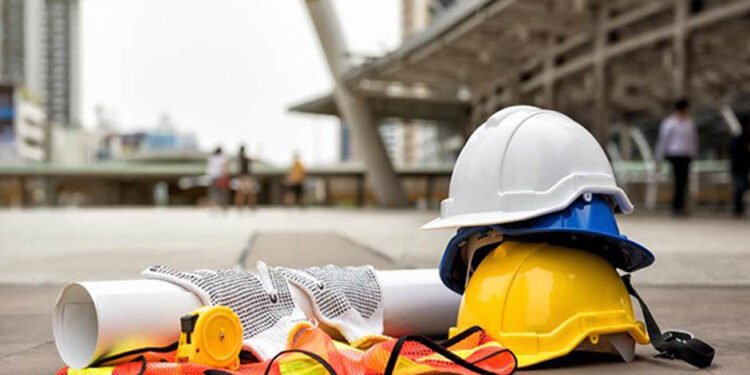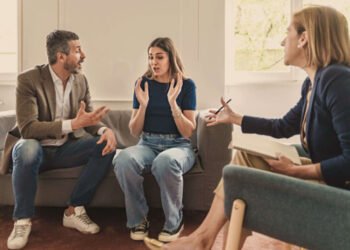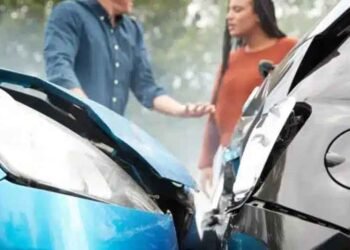Construction sites pulse with a unique energy – the transformation of raw materials into something grand plays out against a backdrop of potential danger. Workers navigate heights with practiced ease, their movements seemingly at odds with the inherent risk of their profession. Sadly, preventable tragedies mar this awe-inspiring process. A hastily rigged tool, a disregarded safety protocol, a blatant indifference towards securing a load – these aren’t mere oversights, but choices with potentially devastating consequences.
It’s a fallacy that efficiency and safety can’t coexist on construction sites. Strict adherence to regulations, fostering a culture where safety is every worker’s responsibility, and holding those in charge accountable create an environment where workers can return home unharmed to their families each night.
Common Causes of Injuries on Construction Sites
The sheer force involved in construction makes seemingly minor lapses in safety catastrophic. Falling objects, even relatively small tools dropped from several stories up, land with enough momentum to cause severe harm to those below. Materials meant to be secured for transport can shift, crushing limbs, or severing them if workers aren’t clear of the load’s path.
Power tools are essential in construction, but they demand respect. A dull sawblade requiring excessive force invites kickback. A malfunctioning table saw, missing its guard, turns a standard task into a potential tragedy waiting to happen. Proper training on equipment use, combined with rigorous maintenance, minimizes the likelihood of these devastating accidents.
Caught-in/between accidents often involve large machinery. Moving gears, conveyor belts, and other industrial equipment can crush a worker’s body in the blink of an eye. Lockout/tagout procedures, which ensure machines are truly powered down before repairs, are literally the difference between life and death. Sadly, ignoring these safety protocols often stems from the pressure to get a stalled machine operational, potentially at a devastating human cost.
Falls from heights continue to be a leading cause of both fatalities and severe injuries in construction. Improperly fitted harnesses, the failure to tie off when required, and using scaffolding that’s damaged or erected haphazardly turn what should be a safe work area into a zone of extreme risk. These types of accidents highlight the importance of both individual vigilance and creating a worksite where reporting damaged fall protection equipment is encouraged, not punished.
In the most tragic cases, negligence claims a construction worker’s life. When this happens, a wrongful death attorney becomes the voice of the deceased, advocating tirelessly for their surviving family members. Beyond funeral expenses and lost income, these cases consider the emotional suffering of those left behind. Holding those responsible fully accountable provides a sense of justice and vital financial resources during an unfathomably difficult time.
Safety Protocols that Save Lives
OSHA standards often get framed as bureaucratic hurdles, mere hoops to jump through to remain in compliance. Yet, it’s crucial to remember that these standards are rooted in lessons learned the hard way, often written in the blood of workers who came before. They outline the minimums for keeping workers safe. For example, hard hat requirements aren’t about making workers uncomfortable – they exist because falling objects are a predictable hazard, and hardhats demonstrably reduce injuries and fatalities. Similarly, eye protection standards reflect the devastating consequences of projectiles or chemical splashes.
Properly fitted Personal Protective Equipment (PPE) goes beyond the basics. Tasks that generate excessive noise warrant hearing protection to prevent long-term damage. Work at heights may necessitate specialized harnesses and lanyards. Understanding the specific PPE required for a job is a sign of a company that values its employees’ well-being.
Equipment maintenance might seem like a cost, but a proactive approach is ultimately cheaper than reactive measures. Regular inspections, tagging out a damaged tool until fixed or replaced, and routine maintenance of machinery minimizes the potential for catastrophic failures.
Worker training should never be a one-and-done event. Even experienced workers benefit from refresher courses, as standards evolve and new equipment comes into use. Beyond technical knowledge, it’s vital to empower workers to speak up when they see safety protocols being ignored. A workplace culture where a worker is reprimanded for stopping a job due to a concern is a culture where a serious injury is waiting to happen. True safety flows two ways – setting clear expectations and then fostering an environment where those expectations are upheld, regardless of deadlines or other external pressures.
Employer Responsibilities and a Construction Accident Lawyer’s Role
True workplace safety extends far beyond a binder of OSHA regulations gathering dust on a shelf. Companies must actively create a culture of safety where it’s ingrained in every worker, from the newest laborer to the project foreman, that taking the time to do things the right way is paramount. This means accountability starting at the top. When management emphasizes meeting deadlines in a manner that subtly encourages cutting corners, workers internalize that risking their safety is an acceptable practice. Regular safety drills, beyond merely checking a box for compliance, ensure that everyone knows procedures in an emergency. Swift resolution of potential hazards, when reported by workers, builds trust that their concerns are taken seriously.
It’s also in an employer’s best interest to treat every workplace accident, even seemingly minor ones, as a potential legal issue. Thorough documentation of the incident, obtaining witness statements, and preserving evidence (like damaged equipment) goes a long way in protecting the company should a lawsuit arise later. Unfortunately, the reality is that some employers prioritize minimizing their own liability over ensuring an injured worker receives the comprehensive care they need.
When blatant negligence is a factor – safety protocols ignored, known equipment malfunctions swept under the rug – a construction accident lawyer becomes crucial. These cases are complex. Demonstrating that the employer had a duty of care towards the worker, that they breached that duty, and that breach directly caused the injury requires a skilled attorney. Their aim is to secure fair compensation for the injured worker, covering not just immediate medical bills, but the potential for lifelong loss of earning capacity and the intangible toll of pain and suffering.
Amputation Injuries: Know Your Rights
While workers’ compensation provides vital protection after a workplace injury, in cases of amputation, it’s important to understand that it might not offer the full financial support you and your family need and deserve. Workers’ comp may cover your medical bills and a portion of your lost wages, but it rarely factors in the true, lifelong impact of losing a limb. The cost of advanced prosthetics, ongoing rehabilitation, potential modifications to your home, and the harsh reality of diminished earning potential all warrant compensation beyond a standard workers’ comp settlement.
This is where an amputation injury lawyer plays a crucial role. They understand the complexities of your recovery journey and the ways in which a catastrophic injury casts a long financial shadow. Their goal is to fight for a settlement that truly addresses the challenges you face, today and in the decades to come.
Conclusion
Construction has the potential to be an arena where impressive feats are achieved safely. Where workers take pride in being part of building lasting structures, and come home each night whole and healthy to their loved ones. This attainable goal demands vigilance from all involved. It demands workers who feel empowered to speak up when they see unsafe conditions, who refuse to be rushed into cutting corners, and who utilize any confidential reporting system a company may have. It demands employers who see safety as a core value, not a hurdle to profit. Employers who invest proactively in training, who foster a culture of accountability for safety, and who make swift corrections when issues are raised.
There’s an abundance of resources beyond basic OSHA compliance to aid companies in creating truly safe worksites. Industry-specific organizations, insurance providers, and private consultants all offer a variety of services to aid in risk assessment, training, and accident prevention strategies. For workers seeking ways to advocate for safety within their company, unions can offer support, and OSHA itself provides guidance for those who feel their concerns aren’t being heard. Change is possible, but it requires a fundamental shift in how safety is perceived – it’s the foundation upon which everything else thrives, not an obstacle to be overcome.












